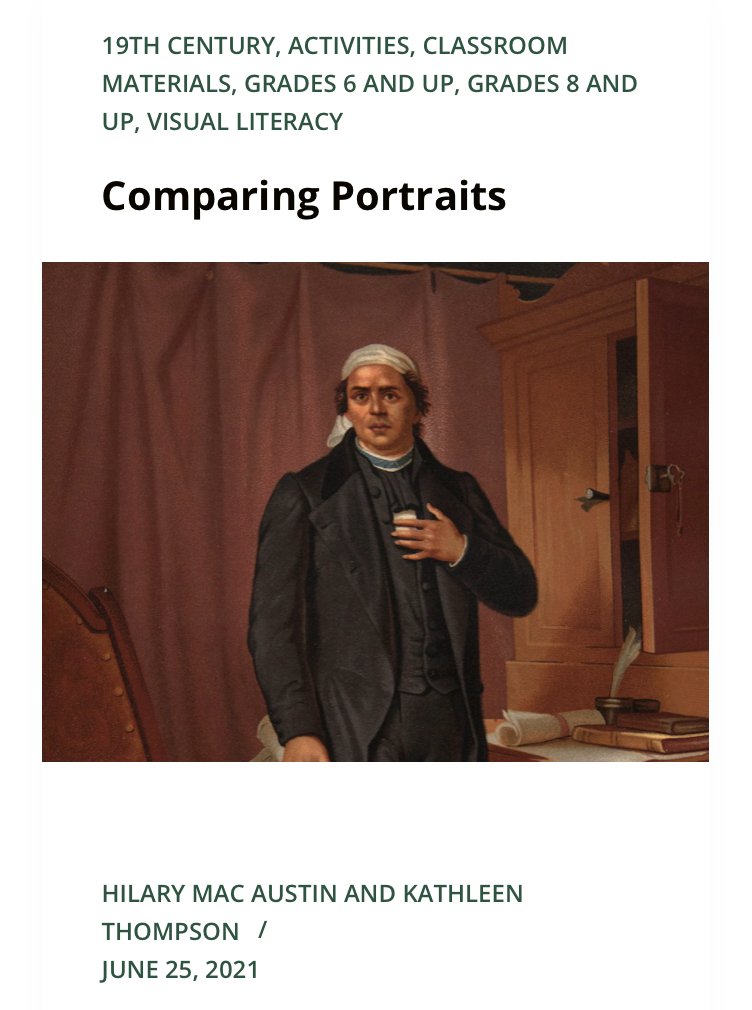Introduction

Scholars writing the history of Mexican independence might begin with two straightforward dates: On September 16, 1810, peasants across the countryside responded to Father Miguel Hidalgo’s call to rebellion and took up arms against the Spanish. Eleven years later, Spain agreed to recognize Mexico as an independent country. But it would be a mistake to assume a simple cause-and-effect relationship between these two events. Mexico’s struggle for independence presents historians with a number of complications that resist straightforward narrative.
To begin, the early leaders of the insurrection—Hidalgo and his lieutenants—were all defeated within the first five years. The struggle continued as a guerrilla war after 1815, but lacked a clear political agenda and could not overcome the smaller, but better-equipped, Spanish army. In 1821 the Spanish appointed the conservative, Mexican-born commander, Augustin de Iturbide to lead a final campaign against the rebels. To the surprise of the Spanish, Iturbide switched sides. He persuaded the remaining rebel leaders as well as other royalists to join him and Spain suddenly found itself without an army. Spain negotiated with Iturbide and agreed to Mexico’s independence, but on terms that met few of the demands of the original leaders or the people who had carried out the fighting for over a decade.
To understand the struggle for Mexican independence, it’s necessary to explore both the wider, international context and the internal, social conditions of New Spain.
To understand this series of events, it’s necessary to explore both the wider, international context for Mexican independence and the internal, social conditions of New Spain. Independence movements in Mexico and throughout South America were, in part, sparked by turmoil in Spain itself. In 1808 Napoleon invaded the Iberian Peninsula, forced the king of Spain to abdicate the throne, and installed his brother as ruler. As a result, the government of Spain became illegitimate in the eyes of its own citizens. The people of Spain rose up against the French invaders to defend their king, country, and the Catholic Church, and took government into their own hands by forming governing councils, or juntas. This upheaval within Spain not only encouraged stronger local governments throughout the empire, it also created an opportunity for people in the Spanish colonies to advance the cause of independence.
Spain had established the colony of New Spain, with Mexico City as its capital, after conquering the Aztec Empire in 1521. At its height in the late eighteenth century, New Spain stretched from present-day western Canada south through North America, west of the Mississippi and including the Caribbean, to the northern tip of South America. (Spain’s South American territories were administered under the separate Viceroyalty of Peru.)
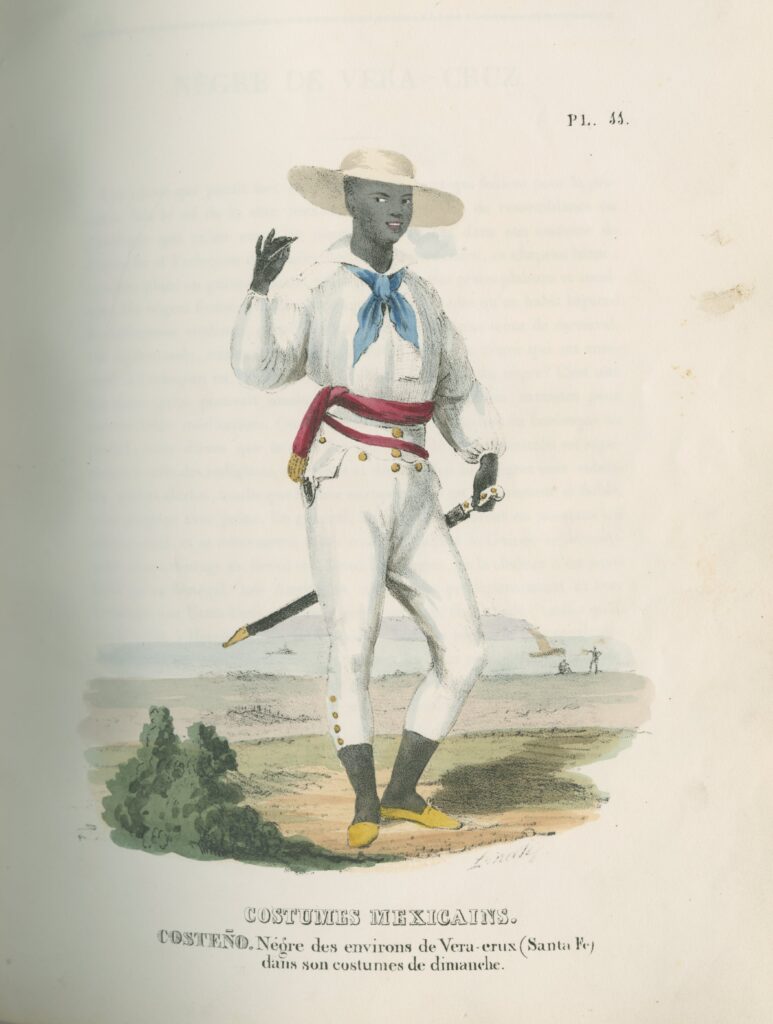
Spain maintained control of its colonies by imposing two distinct legal systems: one that pertained to Europeans (the república de españoles) and one for native peoples (the república de indios). In practice, racial mixing produced a much more complicated social reality. As a result, social status in colonial Mexico was the result of a caste system, or permeable social hierarchy based on differences in wealth, inherited rank, culture, and skin color. European-born Spaniards received the greatest social privileges and legal protections. The next tier included criollos, also known as creoles (Mexican-born people of Spanish descent who were considered white). Below them were people of mixed European and Indian ancestry, known as mestizos, and indigenous people (Indians of many different cultures and languages). Finally, there were people of African descent, many of whom shared some European or Indian ancestry, and were referred to as mulattoes or grouped with mestizos. Indians and Afro-Mexicans were subject to severe discrimination and segregation and about 10 percent of Afro-Mexicans were slaves.
Individuals from all of these groups—except the European-born Spaniards—participated in the insurrection. But, as historian Virginia Guedea argues, they held different goals. Criollo sympathizers lived primarily in the cities and focused on the issue of political autonomy from Spain. They “sought to create more opportunities for Americans to govern themselves.” The people who filled the ranks of fighters were rural peasants and workers, largely Indian and Afro-Mexican, whose main concern was “access to land and improved working conditions,” including ending slavery and the caste system. The rebels’ demands to change social conditions within Mexico alienated many criollos from the independence cause. Many criollos were unwilling to risk losing their property or privileges, and feared for their personal safety.
From the beginning, the war involved extraordinary acts of violence on both sides and this violence often gave the conflict more the appearance of a caste war or civil war than a war for independence. For example, the peasants who accompanied Hidalgo in the first days of the uprising slaughtered whole groups of Spanish nobles, including women and children. Spanish troops, in turn, committed violence not only against rebel fighters, but also against villages suspected of supporting the insurrection. After capturing and executing Hidalgo in July 1811, the Spanish displayed his severed head on a post for the remaining 10 years of the war.
By 1820 people throughout New Spain were exhausted by the violence. Resistance to Spanish rule was collapsing. However, the Spanish Empire was also in fragments. The Spanish king, Fernando VII, had been restored to power, but even so, between 1810 and 1821, much of Latin America had become independent. In 1820 Fernando VII temporarily implemented a more liberal constitution, extending political and property rights to more people, including Indians, throughout the empire. Ironically, it was this liberalization of Spanish government that prompted Iturbide, a conservative royalist, to change sides and fight for independence. The treaty that he negotiated with Spain, known as the Plan of Iguala, called for a constitutional monarchy in Mexico with a European ruler; equal rights for criollos and Spaniards (but not other groups); and establishment of the Roman Catholic Church as the national religion. In 1822 Iturbide dissolved Congress and declared himself emperor of Mexico. He was overthrown a year later and Mexico would be ruled by a series of dictators until the Mexican Revolution of 1910–1920 produced the country’s modern constitution.
The documents that follow include accounts of Mexico as it was under Spanish rule, representations of the struggle for independence, and descriptions of the country after independence.
Please consider the following questions as you review the documents
- What were the social conditions in Mexico both before and after independence? How did Spain impose a caste system on colonial Mexico? What do different cultural and racial groups mean to Mexico after independence? Does the caste system persist?
- How did writers and artists respond to the struggle for independence as it occurred and in the decades that followed?
- How do U.S. and European as well as Mexican writers and artists portray Mexican culture after independence?
Images of New Spain

The two documents in this section offer striking, visual perspectives on New Spain. The first is an eighteenth-century illustration by Mexican priest and scientist Alzate y Ramírez of the practice of harvesting cochineal insects. The cochineal is native to Central and South America and lives on cacti. Aztec and Mayan people had traditionally used the insect to create a brilliant, red dye. After the Spanish conquest, cochineal dye became one of New Spain’s most important exports, second only to silver. Alzate y Ramírez wrote this essay on the lifecycle, cultivation, and uses of the cochineal insect for Antonio Bucareli y Ursúa, then viceroy of New Spain. This illustration portrays an Indian worker, wearing cochineal-dyed pants, scraping the cochineal beetles from the nopal cactus using a deer tail.
The second document is a map created more than 60 years after independence by Mexican geographer and cartographer Antonio García Cubas. García Cubas’ Picturesque and Historic Atlas is a collection of maps depicting Mexico’s commercial, political, and cultural achievements, as well as the country’s rich natural resources and ethnic diversity. This historic map of New Spain appears in the atlas surrounded by portraits of Spanish colonial rulers. It shows the borders of New Spain at the time of independence as well as the population and size of each intendencia, or administrative unit within the colony. Over the course of the nineteenth century, the map of Mexico would change dramatically and repeatedly, not only due to its independence, but also to the wider breakup of the Spanish Empire and the United States’ expansion through the Louisiana Purchase (1803), the Mexican-American War (1846–1848), and the American Indian wars of the 1870s and 1880s.
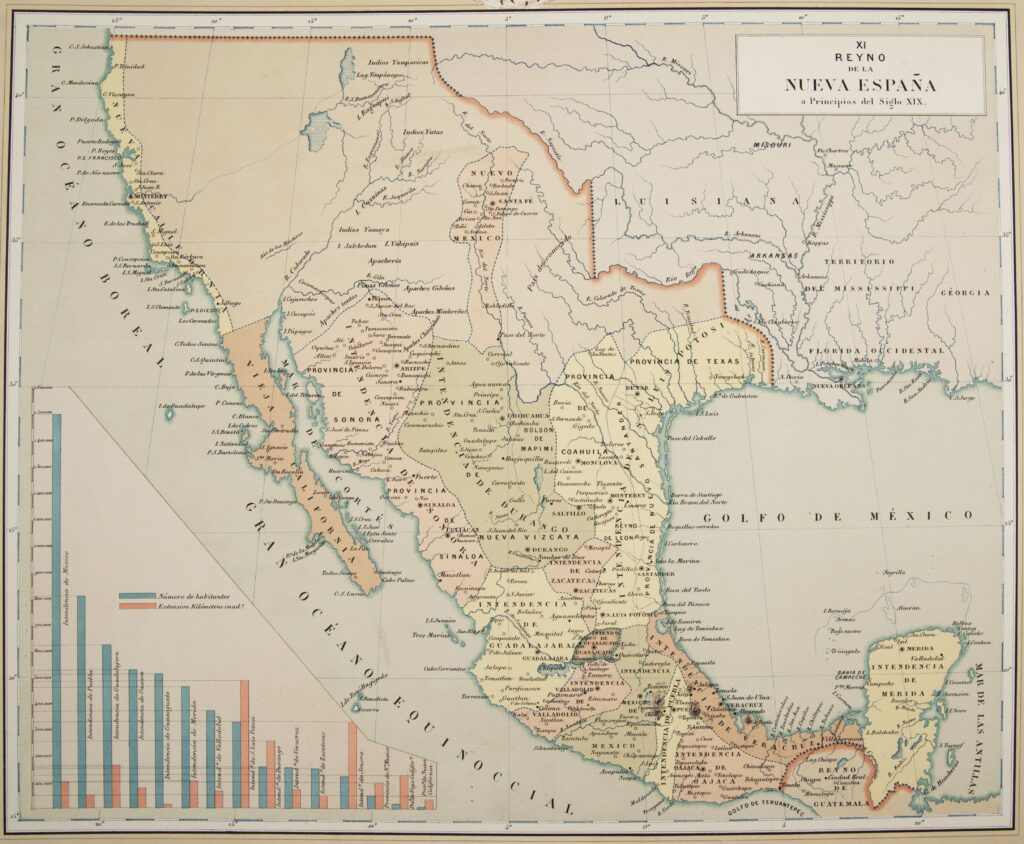
Questions to Consider
- Examine the illustration by Alzate y Ramírez. What qualities of the drawing show that its purpose is scientific? Who and what did Alzate y Ramírez decide to include in the illustration?
- Why do you think the worker is identified as “Indian”? What can the drawing tell us about Spanish colonial culture?
- Describe the territory of New Spain, as represented in García Cubas’ map. What other nations or kingdoms does New Spain border?
- How is the colony organized? Where do the names of towns and provinces come from? What evidence is there of indigenous people?
- What kinds of sources might García Cubas have used to create his map?
- Compare this map of New Spain to a map of twenty-first-century Mexico. What differences do you notice?
The Insurgency
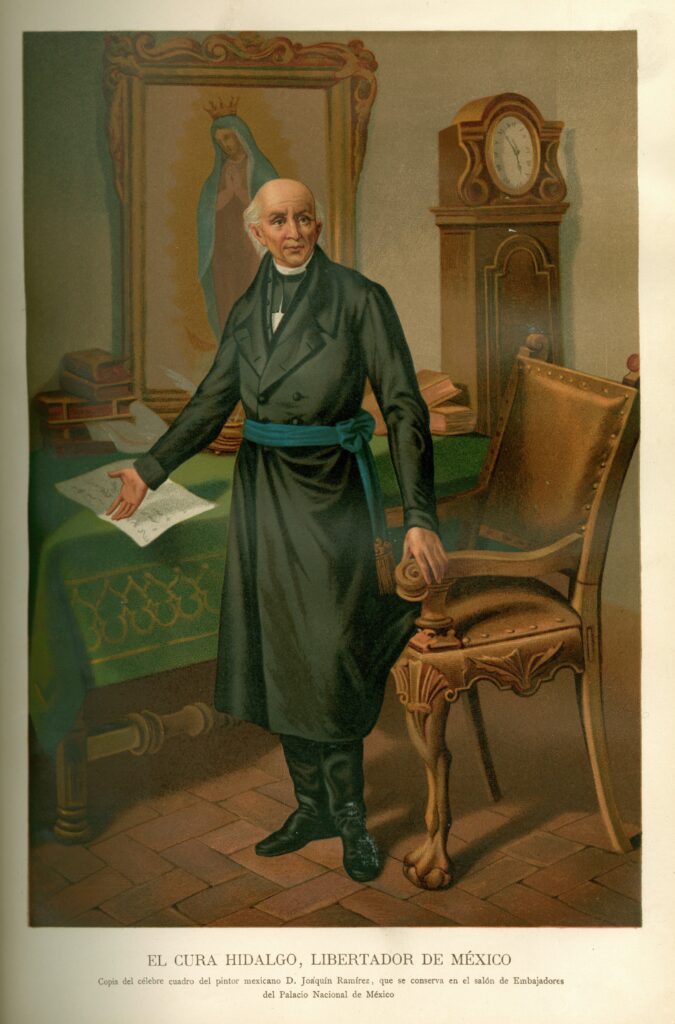
Miguel Hidalgo y Costilla and José María Morelos are celebrated today as two of the most important leaders of the insurgency, the revolt against Spanish colonial government. On September 16, 1810, Hidalgo, a Roman Catholic parish priest, rang the bells of his church in the town of Dolores and urged his parishioners to rise up against their government. His speech would become famous as the Grito de Dolores (“the cry of Dolores”). Hidalgo had allies among the criollo (or Spanish-descended) elite and was a criollo himself. But he strongly objected to the social injustices of the Spanish colonial system and the deep poverty experienced by the majority of the population. He welcomed Indians and mestizos into his church and mobilized them in the armed rebellion. Paradoxically, Hidalgo’s speech emphasized loyalty to the Catholic Church and even to King Ferdinand. He called for “Death to bad government!” and ridding Mexico of the Spaniards, or Gachupines, whom he believed had oppressed its people for centuries.
Hidalgo gathered thousands of followers, most of whom were poor Indian and mestizo farmers and workers. They were poorly armed and untrained in fighting, but they initially defeated the Spanish army in a series of battles and took control of Guanajuato and other important cities west of Mexico City. However, his army failed to take the capital. Hidalgo was captured, stripped of his priesthood and excommunicated from the Church, and in July 1811 executed by firing squad. He was then decapitated and his head displayed in Guanajuato, along with the heads of other leaders of the insurrection, for the remainder of the war.
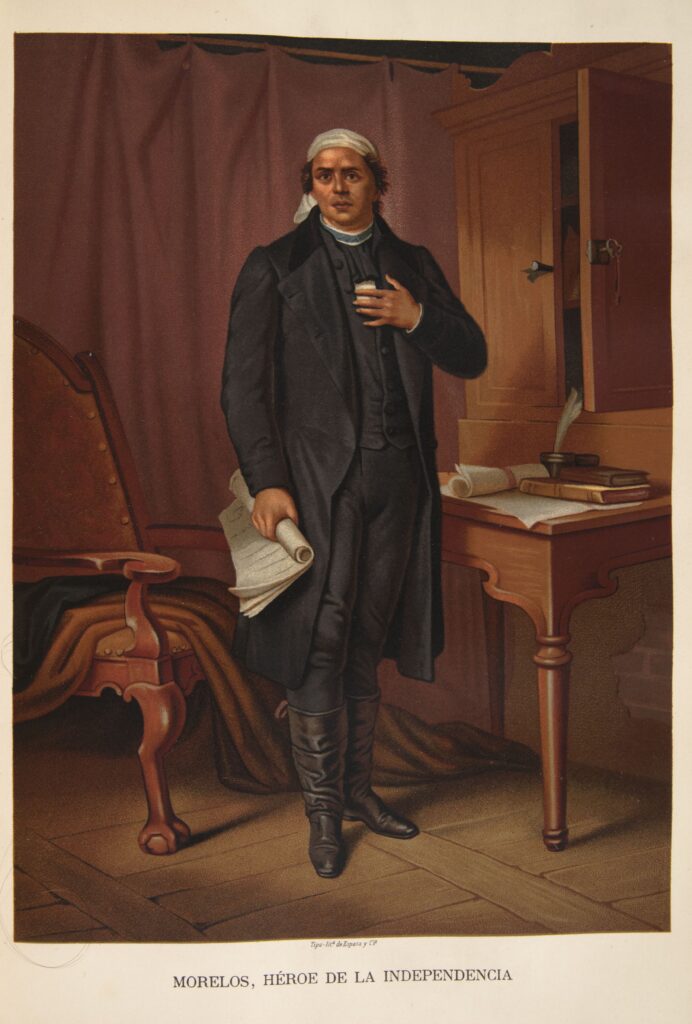
José María Morelos assumed leadership of the insurgency after Hidalgo’s execution. Morelos came from a family of mixed African, Indian, and Spanish ancestry and was not a member of the elite. He distinguished himself as a military strategist and led the rebels to a series of victories over the Spanish army before he was captured and executed in December 1815.
The first document below is an excerpt of a letter from church leaders in Mexico to parish priests in the diocese of Durango. The letter condemns those priests, such as Father Hidalgo, who participate in the insurgency, describing it as “an uprising against the rich people.” It accuses the insurgents of usurping the rights of the king and creating dissension and turmoil among men. The writers argue that the sole purpose of the clergy is to cultivate the spiritual health of their parishioners, and those priests who concern themselves with other things are guilty of abandoning the faith. They exhort priests to pray, to sacrifice, and to be especially diligent in their duties during these times of rebellion and war.
Selection: Pedro de Gamez, et al. Carta pastoral exhortatoria dirigida a los parrocos y demas ecc[lesiásti]cos. del obispado de Durango [Pastoral letter of November 28, 1812, addressed to parish priests and other clergy of the diocese of Durango by the dean and chapter of the cathedral] (1812)
Translation of the last full paragraph on page three of Carta pastoral:
One guy whose last name is Hidalgo is like a new Jeroboam, dividing the people, separating the Americans from the Spaniards. He is taking on the attributes of an absolute ruler. Under the pretense of being a committed saint and a patriot, he seduces many people and causes rebellion that breaks the most important ties of blood and flesh within society. He is also causing reason to cede to force and playing on people so their lowest natures succeed, even over the sacred rights of the Church, and therefore [he] sets this part of America on a path against its own well-being.
The letter is dated November 28, 1812, more than a year after Hidalgo’s execution, but refers to him as an ongoing threat. The writers compare Hidalgo to the Old Testament figure of Jeroboam, king of the northern tribes of Israel. Jeroboam is remembered for dividing Israel and for leading his people to sin by encouraging them to worship golden calves.
The other documents in this section offer representations of Hidalgo and Morelos, created in the decades following independence. H. G. Ward was an English diplomatic representative to Mexico from 1825 to 1827. Vicente Riva Palacio was a Mexican intellectual and politician who published this multivolume history of Mexico, Mexico through the Centuries, in the 1880s. Palacio’s portraits of Hidalgo and Morelos are above in this section.
Selection: H. G. Ward, México, 119-120, 132-133 (1829)
Selection: H. G. Ward, México,156-157 (1829)
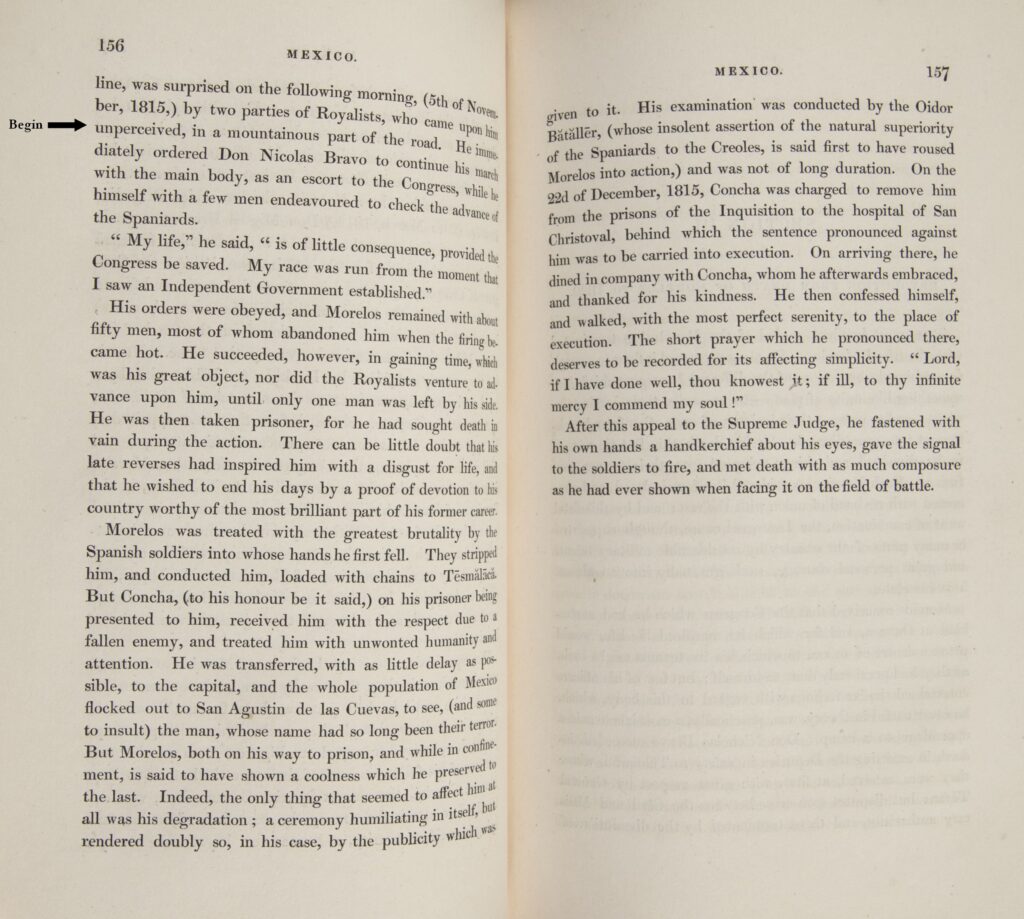
Questions to Consider
- Consider the arguments of church leaders as they are summarized in the discussion above and presented in translation below. What are their criticisms of the insurgents and, specifically, Hidalgo? Why do they compare him to Jeroboam?
- What relationships do the church leaders believe should—and do—exist between the Church, the Spanish colonial government, and Mexico? Why do you think church leaders would respond differently to the insurrection than many parish priests did?
- How does Ward portray Hidalgo and Morelos? What were their characters, as he describes them? Does Ward seem to favor either the insurgents or the Spanish?
- Examine the portraits of Hidalgo and Morelos from Palacio’s encyclopedia. How does each man appear? What are they wearing? What is the symbolism of the objects that surround them?
- Ward’s text is written for British and American audiences in the decade following independence. The paintings were included in a history of Mexico, written for a Mexican audience, more than half a century after independence. What influence do these different contexts have on the works themselves? Do Ward’s written descriptions seem to support or contradict Palacio’s portraits?
The Colonial Caste System
The documents below offer two accounts of New Spain’s caste system from the perspective of European observers. Alexander von Humboldt was a Prussian naturalist and explorer who traveled extensively in Latin America from 1799 to 1804, and later published this essay on New Spain. In this passage, von Humboldt quotes a bishop’s description of colonial society. H. G. Ward was a diplomatic representative to Mexico from England from 1825 to 1827, soon after independence. Both of these writers attempt to describe Mexico to people outside of the Spanish Empire and both were greatly influential in Europe and the United States.
Selection: Alexander von Humboldt, Political Essay on the Kingdom of New Spain, 142-147 (1811)
Selection: H. G. Ward, Mexico, 20-27 (1829)
Questions to Consider
- What is the condition of Indians and Afro-Mexicans in New Spain, according to von Humboldt’s essay? How are both of these groups treated under colonial law?
- Which social groups does Ward identify in colonial Mexico? How does he expand von Humboldt’s account of Mexican society? In what ways do they differ?
- Why do you think Spain chose to administer the colony in this way? What are the consequences of this caste system for the people subject to it and for the colony as a whole?
- How do these writers suggest the caste system influenced people to support or oppose the War for Independence? According to Ward, how did the system change after independence?
Portraits of Independent Mexico

The images in this section portray the people of Mexico in the decades following independence. Claudio Linati was an Italian-born artist who moved to Mexico in 1825 and later published this collection of lithographs in London with French titles. Two of his images are in this section and two are in the Introduction.
The selection below is by Mexican geographer and cartographer Antonio García Cubas who dedicated his life to representing the distinctive land and cultures of nineteenth-century Mexico. He produced atlases, portraits, and texts promoting ideas of Mexican national character and identity. In The Republic of Mexico in 1876 (translated from the original Spanish edition), García Cubas includes an ethnographic account of the Mexican people. He identifies three primary groups: whites, or Spanish descendants; mestizos, or people of mixed European and American Indian ancestry; and full Indians. He argues that, while the first two groups are thriving, the last is dying out.
Selection: Antonio García Cubas, The Republic of Mexico in 1876: A Political and Ethnographical Division of the Population, Character, Habits, Costumes and Vocations of Its Inhabitants, 16, 20, 90, and plates (1876)
Both of these works in some ways refer to the tradition of castas, or caste, paintings, which portrayed people as representatives of racial and ethnic groups. Castas paintings were first created in New Spain in the mid-eighteenth century and remained specific to that colony; no other Spanish colonies produced them.
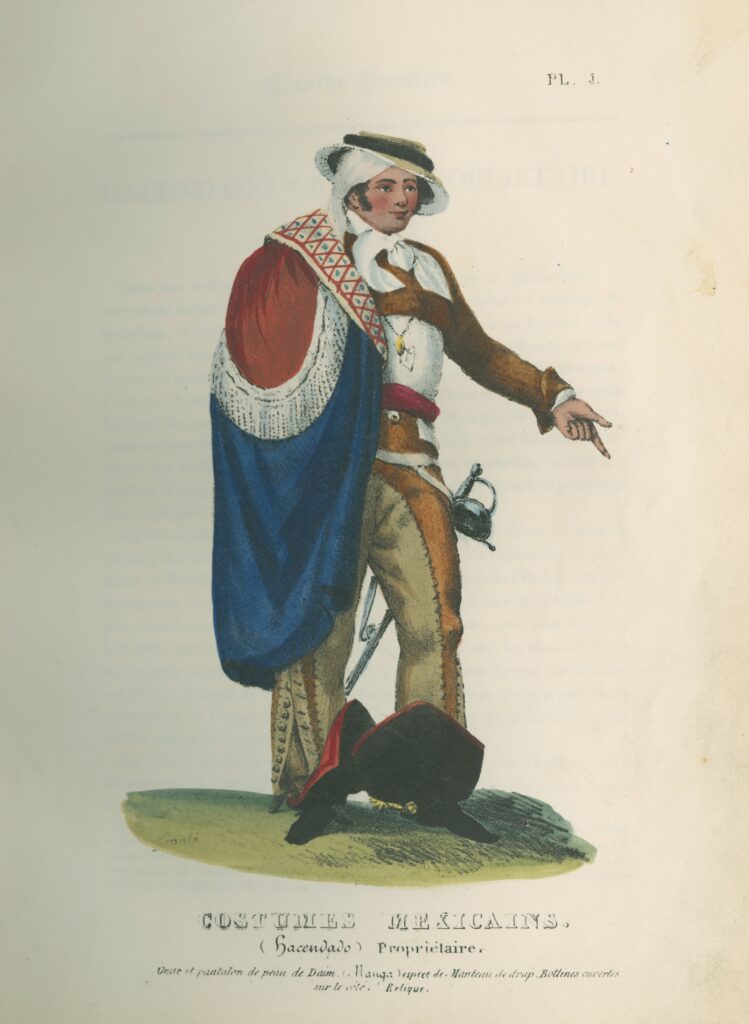
Questions to Consider
- Describe the various figures that appear in the lithographs by Linati. How are people dressed? How are they posed?
- What does Linati convey about different classes and cultures in independent Mexico? Do you think these social types would have been found in colonial New Spain as well? Are there any indications in these images of the effects of independence? (Images: “Indian Woman Servant”, “Costeño. Negro from the Area of Vera-Cruz (Santa Fe) in Sunday Dress”, “Mexican Ladies’ Way of Traveling”, “Landowner”)
- How does García Cubas characterize each of the three groups—whites, mestizos, and Indians (in this excerpt, specifically, the Tarasca nation)—that he identifies as making up Mexican society? How does he visually portray each group? What differences and similarities do you notice between the groups?
- Why do you think García Cubas omits Afro-Mexicans, who appear in earlier works, such as Linati’s? Why does García Cubas predict that full Indians will disappear? What kind of society do you think he envisions in Mexico’s future?
- In what ways does the society portrayed in these works seem continuous with the society portrayed by von Humboldt and Ward? In what ways does it seem different?
Rediscovering the Mayan Heritage
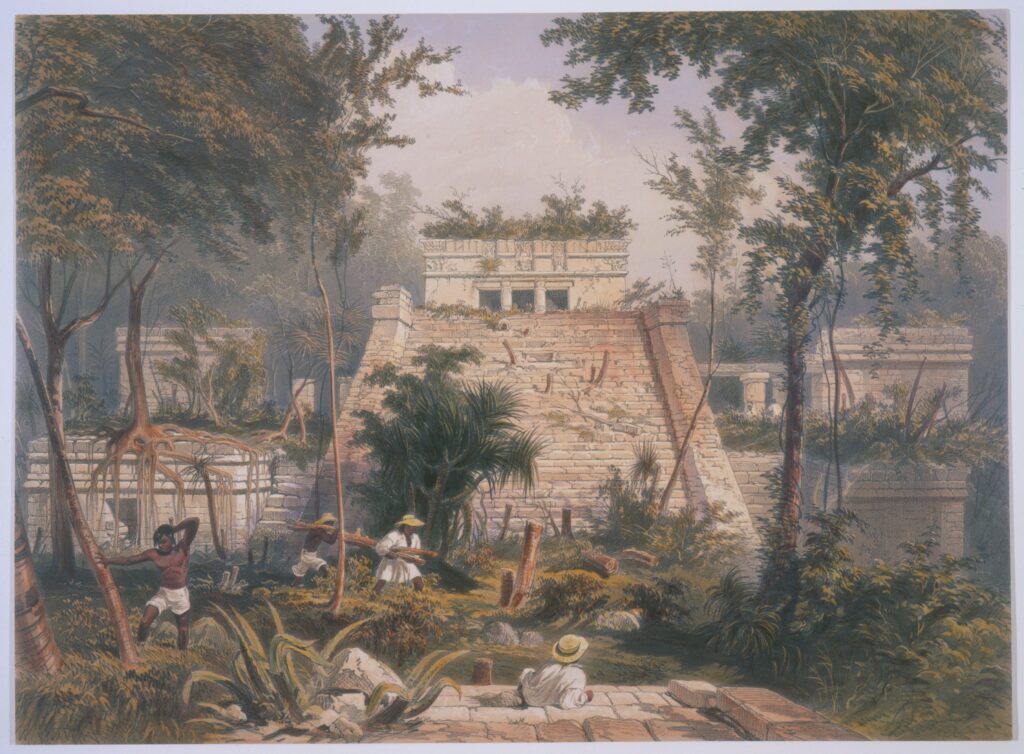
One consequence of Mexican independence was that the country became open to foreign explorers who had not been permitted to enter under Spanish rule. Independence inaugurated what some referred to as “the second discovery of America.” One of these explorers was John Lloyd Stephens, an American diplomat, travel writer, and amateur archeologist, who found ancient Mayan ruins in Guatemala and the Yucatan Peninsula, which became part of southern Mexico. Stephens brought an English artist, Frederick Catherwood, with him on the voyage. Stephens’ illustrated account of the voyage, Incidents of Travel in Central America, Chiapas, and Yucatan, became enormously popular in the United States and Britain. Catherwood published Views of Ancient Monuments as a companion collection of lithograph plates made from watercolors that he had painted during the voyage.

The work of Stephens and other archeologists in some ways facilitated the movement in postcolonial Mexico to celebrate the country’s indigenous history as an alternative to the Spanish heritage. But historians such as R. Tripp Evans caution that Stephens sought to claim the astounding accomplishments of the ancient Mayans as a precursor, not to modern Mexico, but to the United States, which he saw as the next great American empire.
Questions to Consider
- Describe the people who appear in each of these paintings. What are they doing? Why do you think Catherwood chose to show the process of uncovering the ruins and to include people, rather than painting only the revealed buildings?
- How does Catherwood portray the Indian workers and the American explorer? How do the figures relate to the environment and to the ruins, specifically? How do they relate to each other?





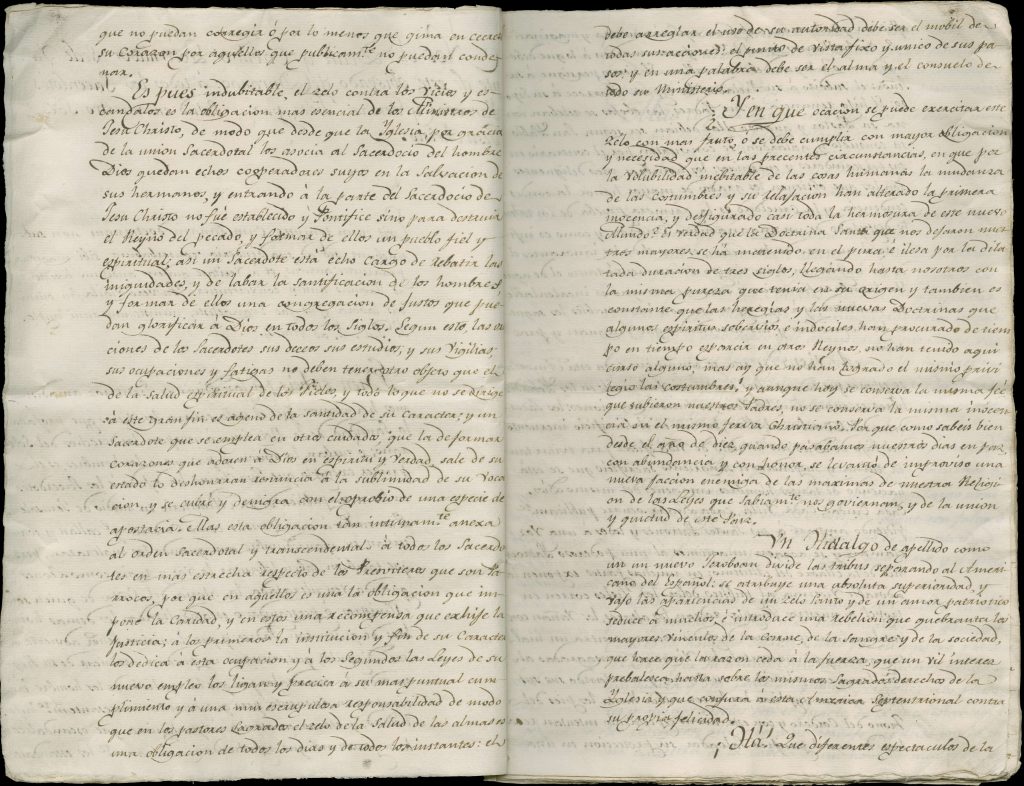
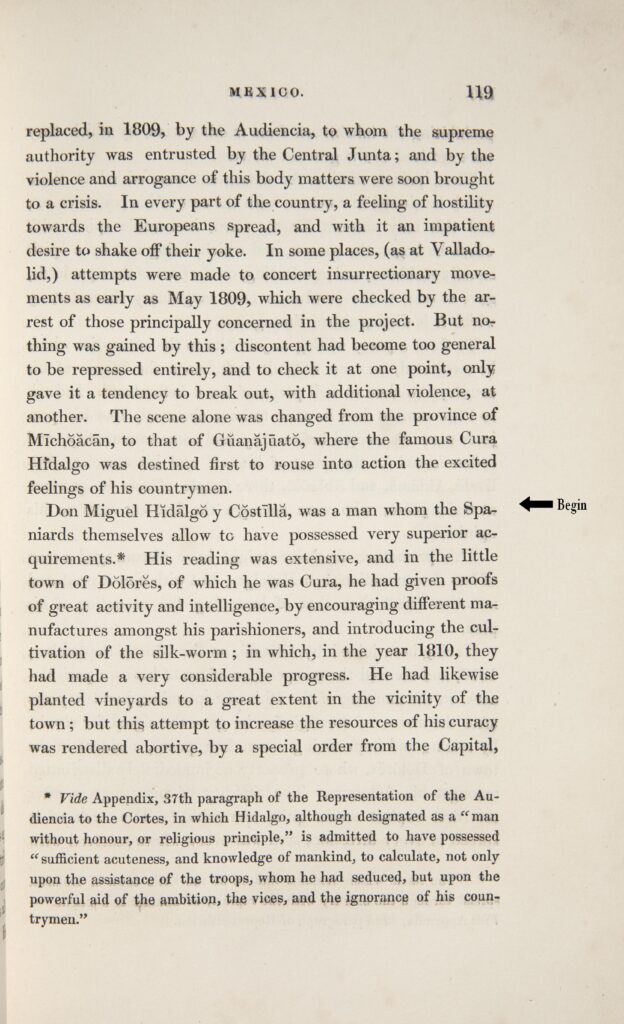
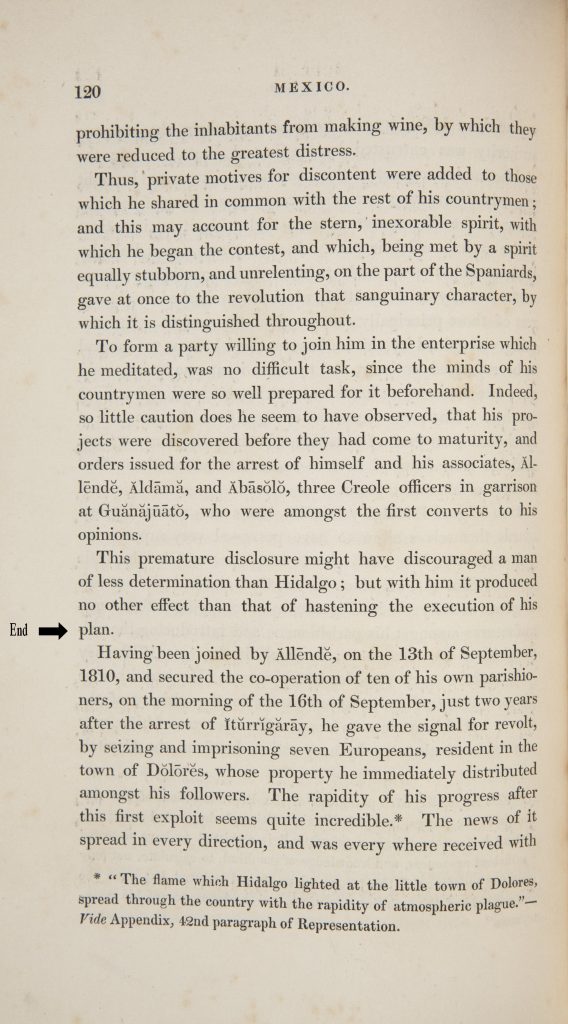



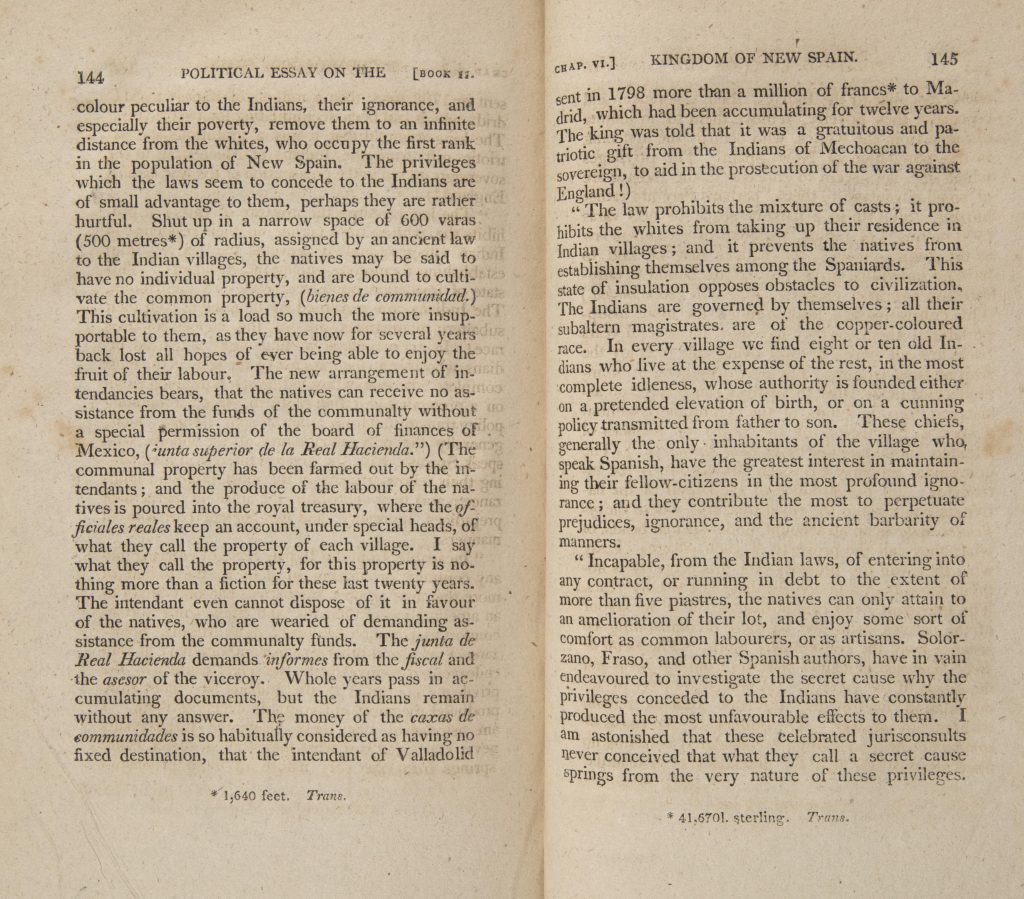

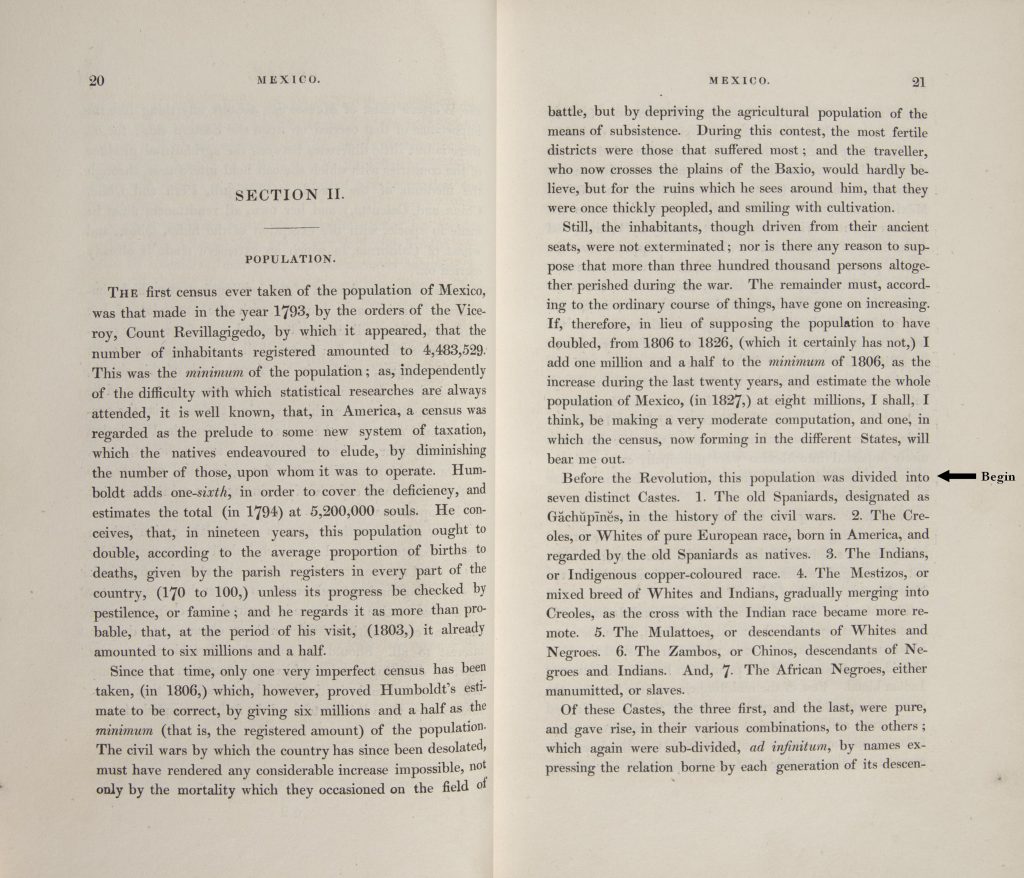

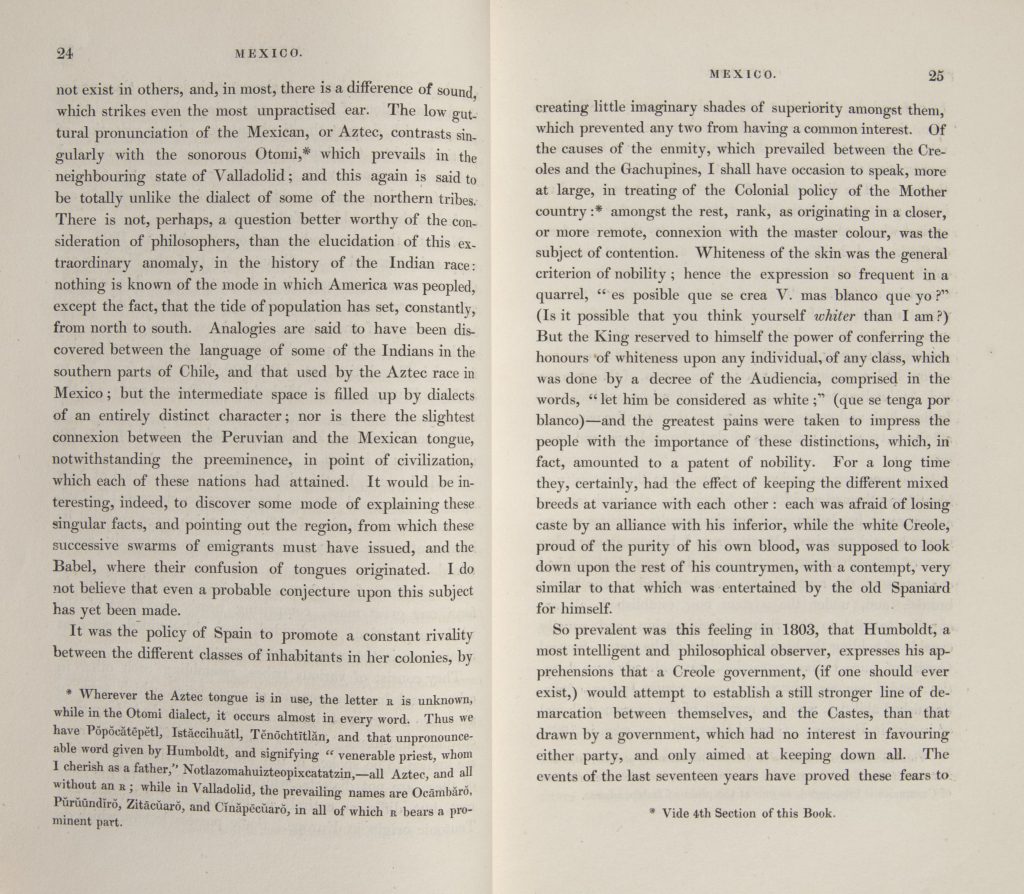
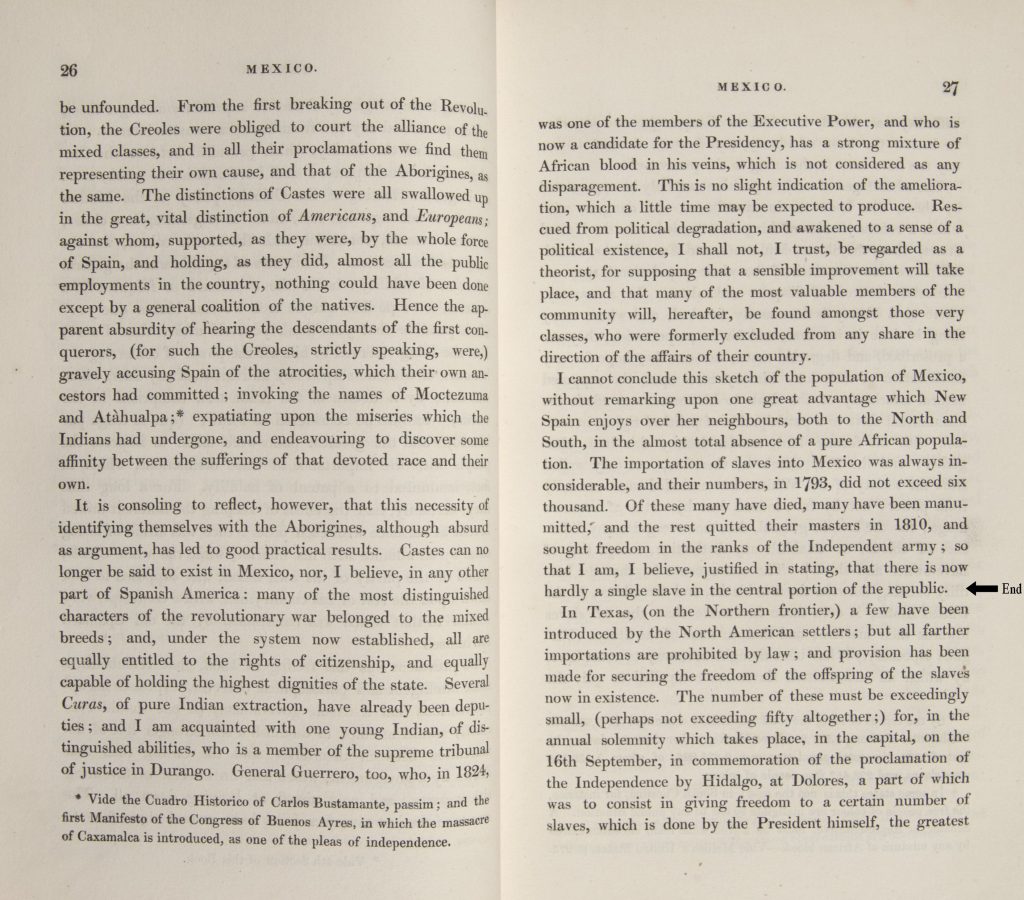
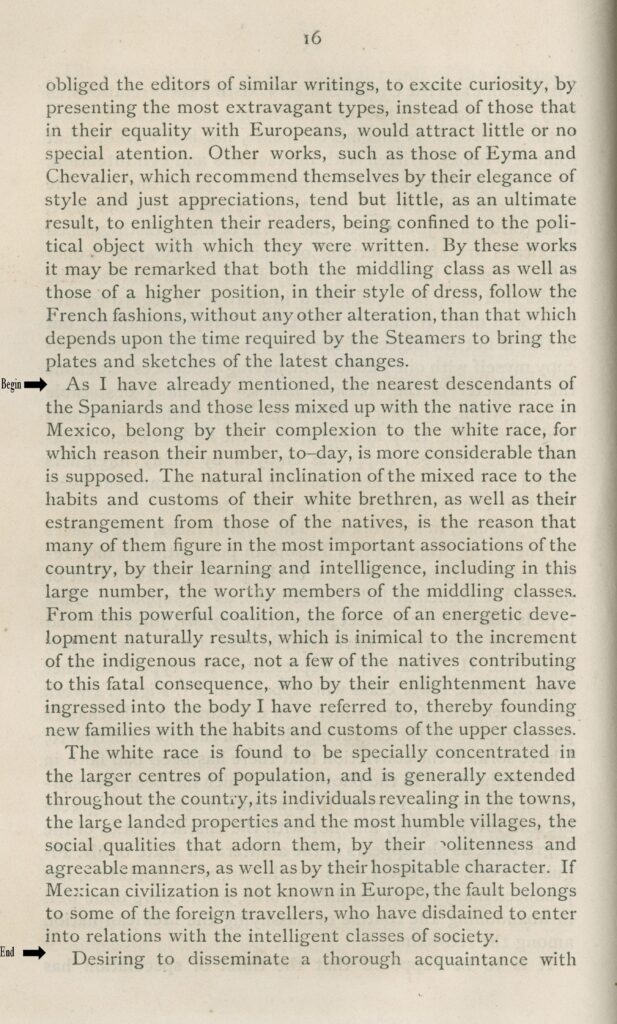

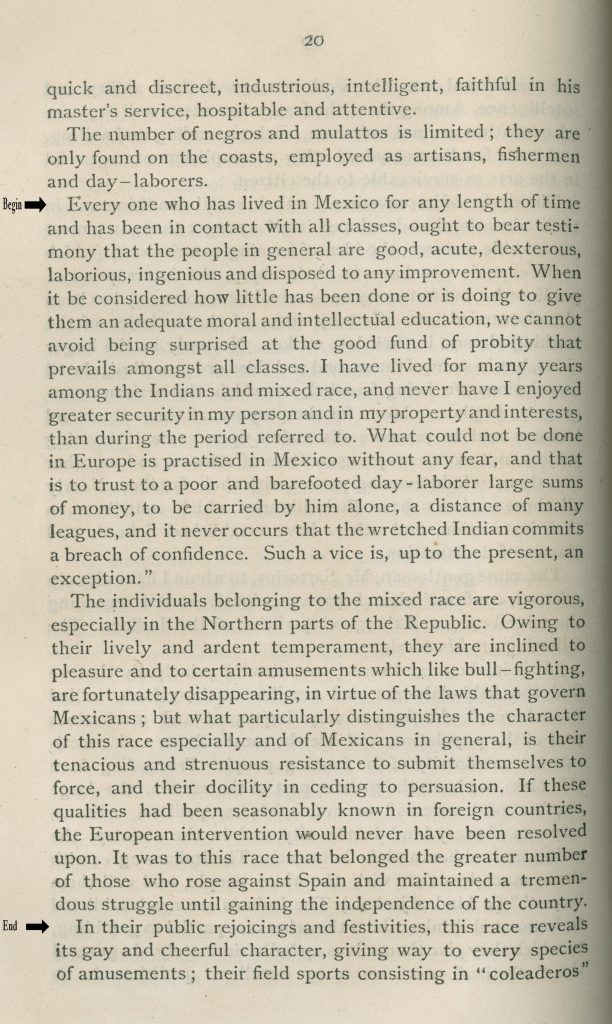
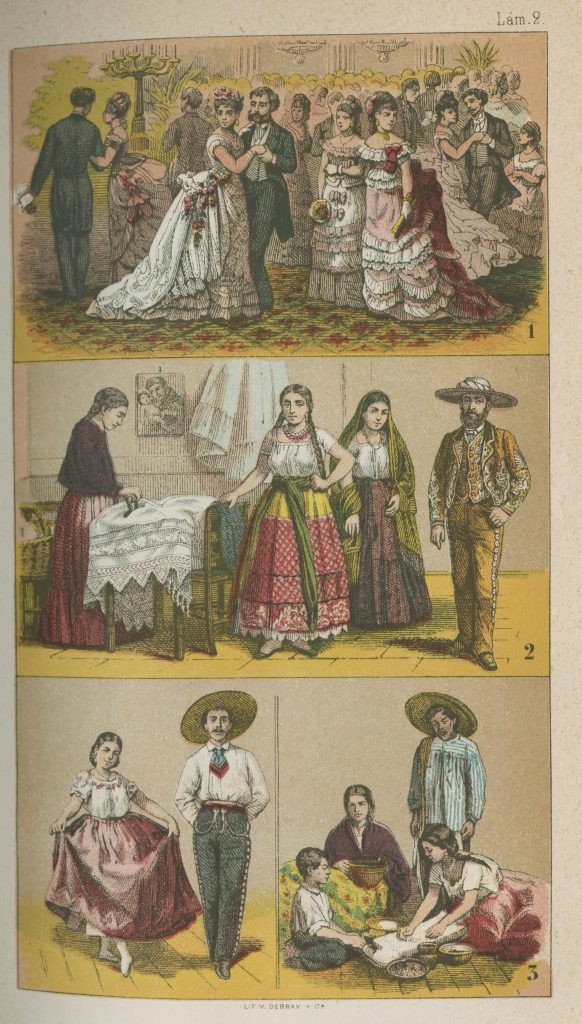
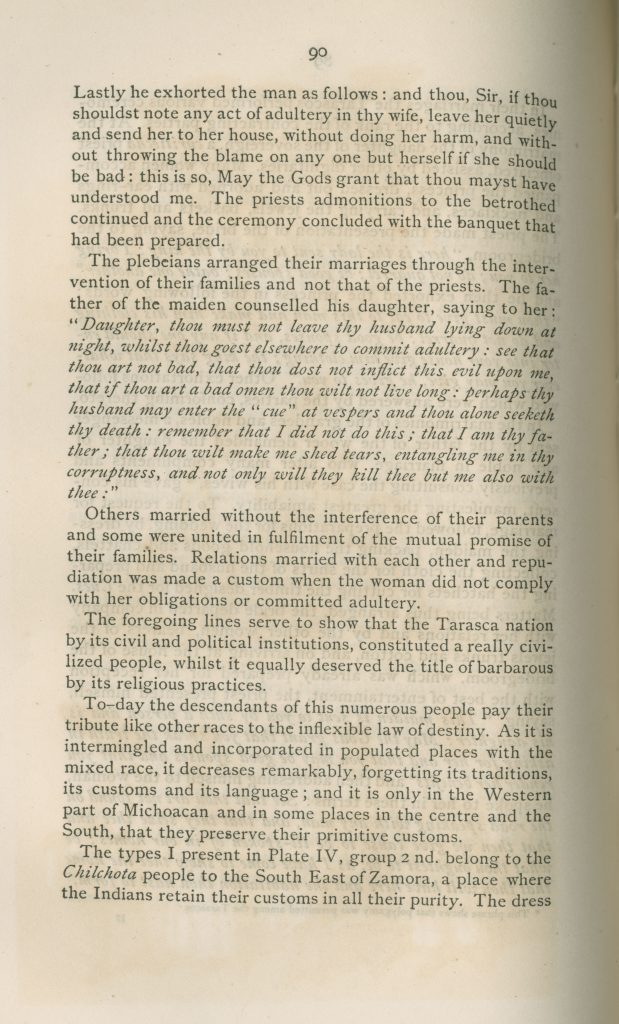
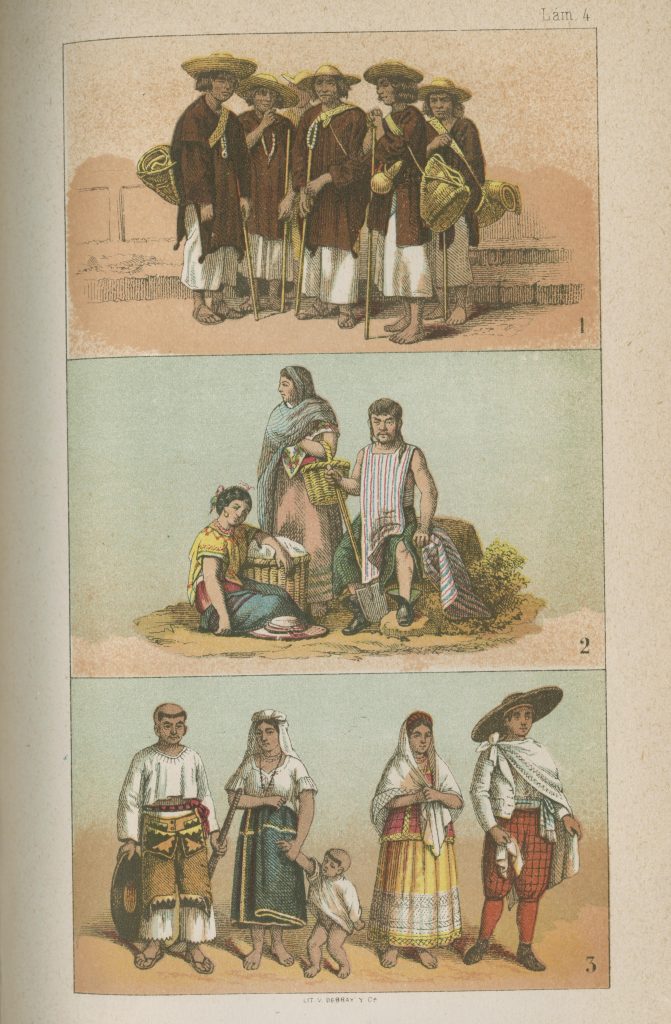






Further Reading
Evans, R. Tripp. Romancing the Maya: Mexican Antiquity in the American Imagination, 1820–1915. Austin: University of Texas Press, 2004.
Guedea, Virginia. “The Process of Mexican Independence.” American Historical Review (February 2000): 116–130.
Newberry Library. The Aztecs and the Making of Colonial Mexico [online exhibit]. http://publications.newberry.org/aztecs/index_en.html.
Van Young, Eric. “The Raw and the Cooked: Elite and Popular Ideology in Mexico, 1800–1821.” In The Middle Period in Latin American History: Values and Attitudes in the 18th-19th Centuries. Edited by Mark D. Szuchman. Boulder: Lynne Rienner Publishers, Inc., 1989. 75–102.
Vincent, Ted. “The Blacks Who Freed Mexico.” The Journal of Negro History 79, 3 (1994): 257–276.




